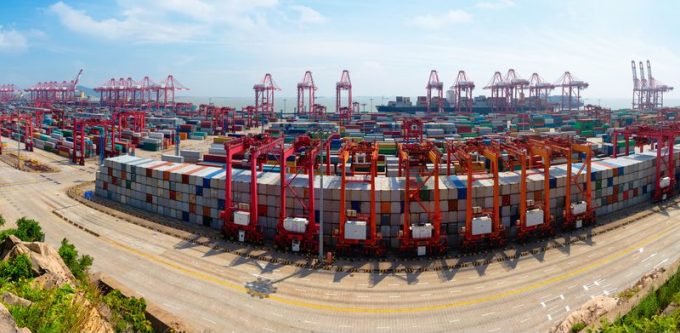Soaring air freight rates may level out as summer capacity takes off
Airfreight rates have soared this month, as the market continues to be propped up by ...

China’s Golden Week traditionally marks the start of the slack season on the major tradelanes of Asia-Europe and the transpacific.
Before this week’s Chinese national holiday, container spot rates, as recorded by the Shanghai Containerized Freight Index (SCFI), had slumped to nigh year-to-date lows on both routes and there seems no reason to suggest there will be a recovery by the time the SCFI resumes publication on 10 October.
Analyst Alphaliner said: “Further rate weakness is expected to be revealed in the coming weeks, with rates of below $500 per teu to Europe and $1,100 per 40ft to the US west coast already being offered by carriers.”
Worryingly for the container lines, Asia-North Europe spot rates are some 22% below the level of 12 months ago, and for the US west coast they are about 18% down.
Carriers will hope that they can at least stabilise the market in the coming weeks with their strategy of blank sailings, and, in the case of the 2M alliance, temporarily suspending a loop until demand picks up.
It is particularly important for the Asia-Europe trades that the rate erosion is halted quickly and a recovery curve is begun, given that new annual contract negotiations would normally begin next month.
“We are quite concerned about our annual contract business,” one carrier source told The Loadstar this week. “At the moment we are not in the best position to start the ball rolling and I can see us deferring initial talks for as long as possible.”
Meanwhile, The Loadstar’s forwarding sources confirmed there were “very low rates” being touted in the market.
“They [carriers] seem more concerned in nailing down their low-sulphur fuel surcharges, but at the same time are offering us, almost daily, silly short-term rates from China,” said one UK forwarder.
Elsewhere, transpacific carriers are banking on a fresh front-loading surge from China to the US west coast ports after the holiday, as shippers endeavour to beat the latest 15% levy on a vast range of Chinese imports and stock up earlier than usual for Thanksgiving and Christmas sales.
The liners will hope that a spike in demand combined with a reduction in supply on the route will push freight rates up to acceptable levels and provide a solid foundation for the bridge to the normal booking surge prior to Chinese new year, which falls early in 2020, on 25 January.
Spot rates from Asia to the US west coast are currently some 30% below the level of a year ago. Nevertheless, container analyst and SeaIntelligence Consulting co-founder Lars Jensen believes comparing transpacific rates this year with last “conveys no meaningful information”, given that the market in 2018 was thrown out of kilter by significant front-loading ahead of the first tranche of import duty on Chinese goods.
And, notwithstanding the trade spat between the US and China potentially denting transpacific demand, online freight marketplace firm Freightos said US importers “were increasingly evaluating non-Chinese options in South-east Asia”.
“This change has accelerated during the course of the year,” noted Freightos; its data recording a near two percentage point increase in South-east Asia searches in Q3, compared with the first quarter of the year.
Comment on this article